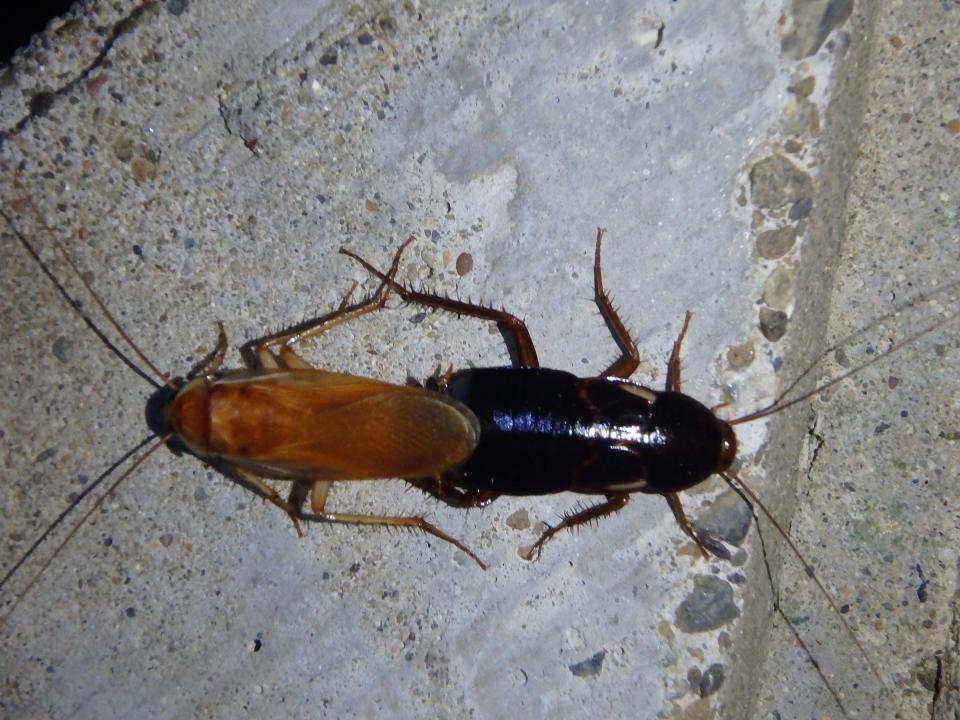Bugged: Outdoor cockroach infestations grow in Shasta County, Northern California
Shasta County's cockroach population exploded over the past five years, according to pest control and animal experts.
That's because a newer species of prolific cockroach moved into the North State, they said.
These are outdoor species that take up residence in garages and sheds, not usually in restaurants or homes, said Lynn Kimsey, Professor of Entomology at U.C. Davis and director of the Bohart Museum of Entomology.
That jibes with Shasta County Department of Resource Management, Food Safety and Facility Inspections reports. There's been no annual uptick in the number of restaurants cited for having cockroaches, the department's senior environmental health specialist Fern Hastings said.

But the number of calls from people complaining about outdoor cockroach infestations in their garages, up against their homes and other places that allow the pest to wander indoors grew an average of 18% per year since 2017, said Jacqui Clark, owner of Woods Pest Control in Redding.
It’s hard to pinpoint where infestations are worse, said David Silva, owner of Professional Exterminators of Redding. At first, calls increased mostly in Redding's Enterprise area. Now complaints come from across the county.
The problem is growing statewide, mostly in urban and suburban areas, Kimsey said.
The more-prolific Turkestan cockroach took over the territory of another invasive species, the Oriental cockroach. Both bugs likely came to the U.S. in shipping containers and military transports, or were imported as food for exotic pets. Some grow to 1.5 inches long, she said, and some of the males can fly.
The bugs are moving deeper into human communities as they multiply and as California's wildfires destroy some of their food and other resources, Clark said.
Drought also plays a part, extending their breeding cycles, Silva said.
It's rare, but non-native and sometimes invasive species of insects are found in the North State, Shasta County Agricultural Commissioner Rick Gurrola said.
Why living with cockroaches can be bad for humans
Cockroaches serve an important ecological purpose, according to the Bohart Museum of Entomology. They eat dead vegetation and are food for insects, birds, reptiles and other animals.
But cockroaches pose health risks for humans, according to the U.S. Centers for Disease Control and Prevention. They don’t bite, but some cockroaches carry and can spread salmonella, an amoebic parasite or the poliomyelitis virus,
Cockroach body parts, saliva and waste can cause allergic reactions and trigger asthma, according to the Allergy and Asthma Foundation of America.
They can also trigger "psychologic or emotional distress" in some people, the CDC said.
Fear what people will think keeps some people from reporting an infestation, Clark said. “Admitting you have cockroaches carries a stigma that your home is dirty," he said, but the beginning of an infestation has nothing to do with a home's cleanliness.
Unlike the indoor German cockroach, outdoor species like the Turkestan cockroach don't usually take up residence in kitchens, Clark and Silva said. They tend to wander indoors accidentally, and house lights can attract the flying males.
Instead they prefer to live in garages, entryways, mulch, compost piles, plant pots, ground cover and inside meter and sprinkler boxes.
Turkestan cockroaches are easier to kill than the indoor German cockroach with which most people are familiar, pest control experts said.
For more information on cockroaches go to the Invasive and Exotic Pests website of the University of California's Statewide Integrated Pest Management Program at bit.ly/3vRYohr.
Jessica Skropanic is a features reporter for the Record Searchlight/USA Today Network. She covers science, arts, social issues and entertainment stories. Follow her on Twitter @RS_JSkropanic and on Facebook. Join Jessica in the Get Out! Nor Cal recreation Facebook group. To support and sustain this work, please subscribe today. Thank you.
This article originally appeared on Redding Record Searchlight: Cockroach populations explode in Shasta County, across California

